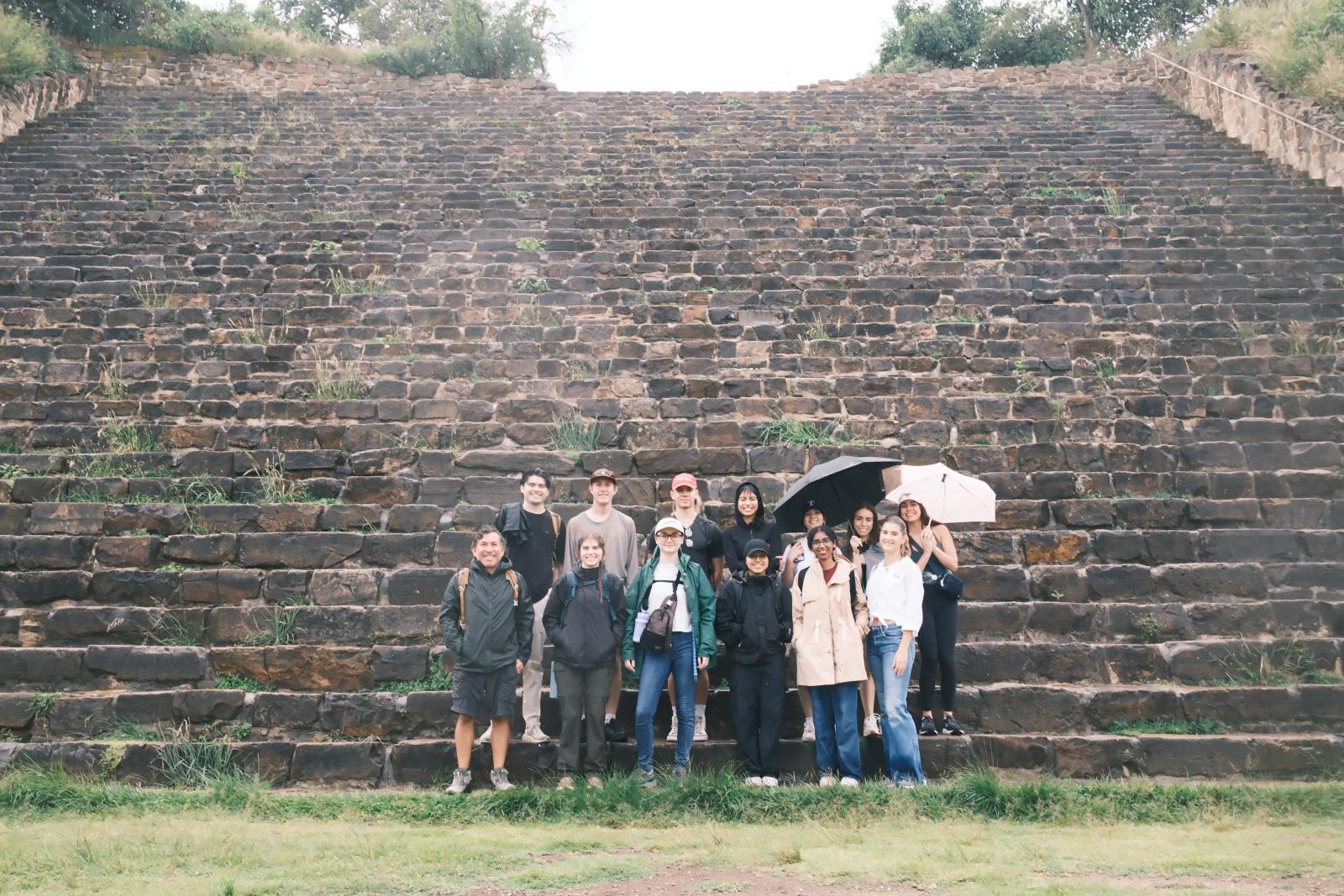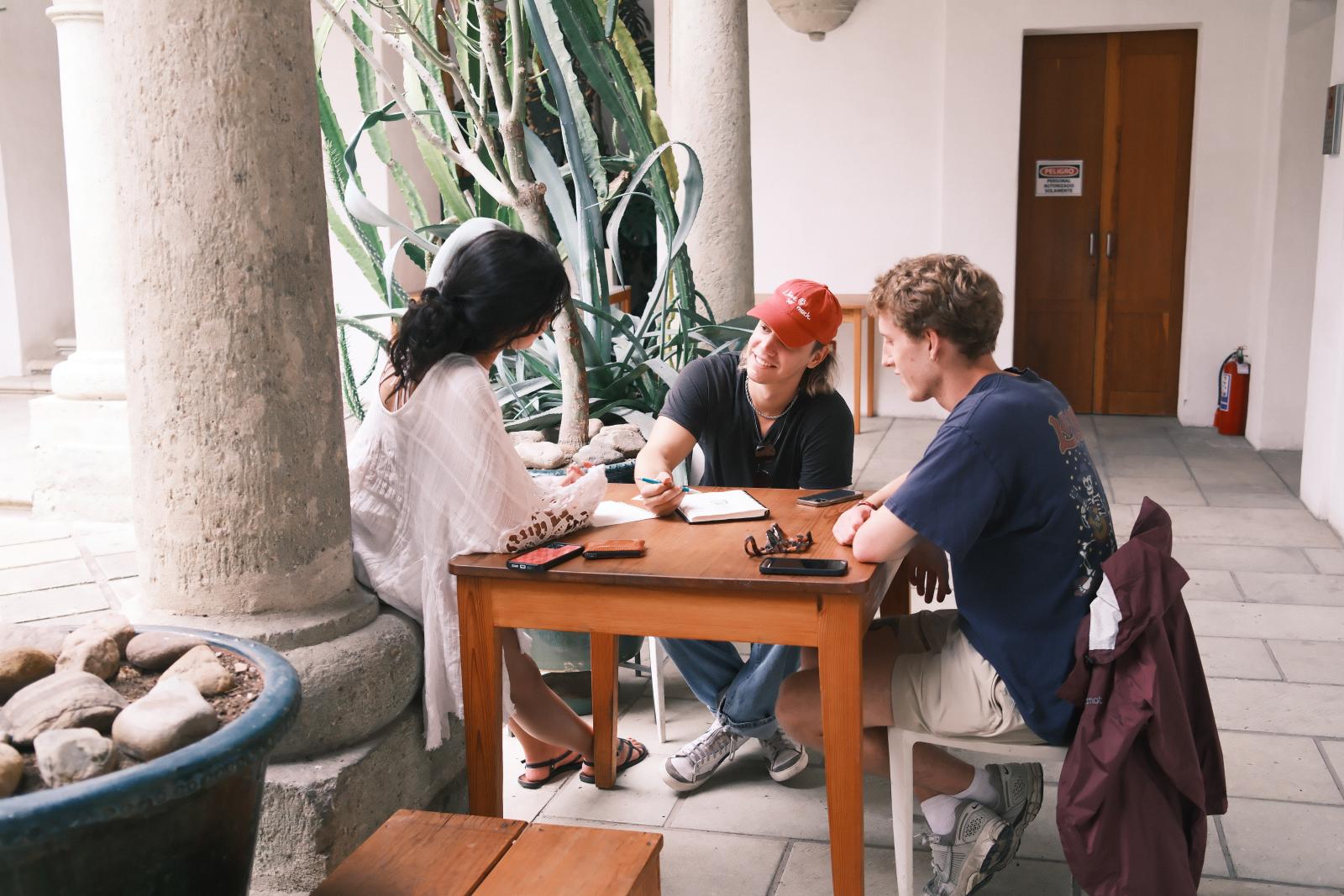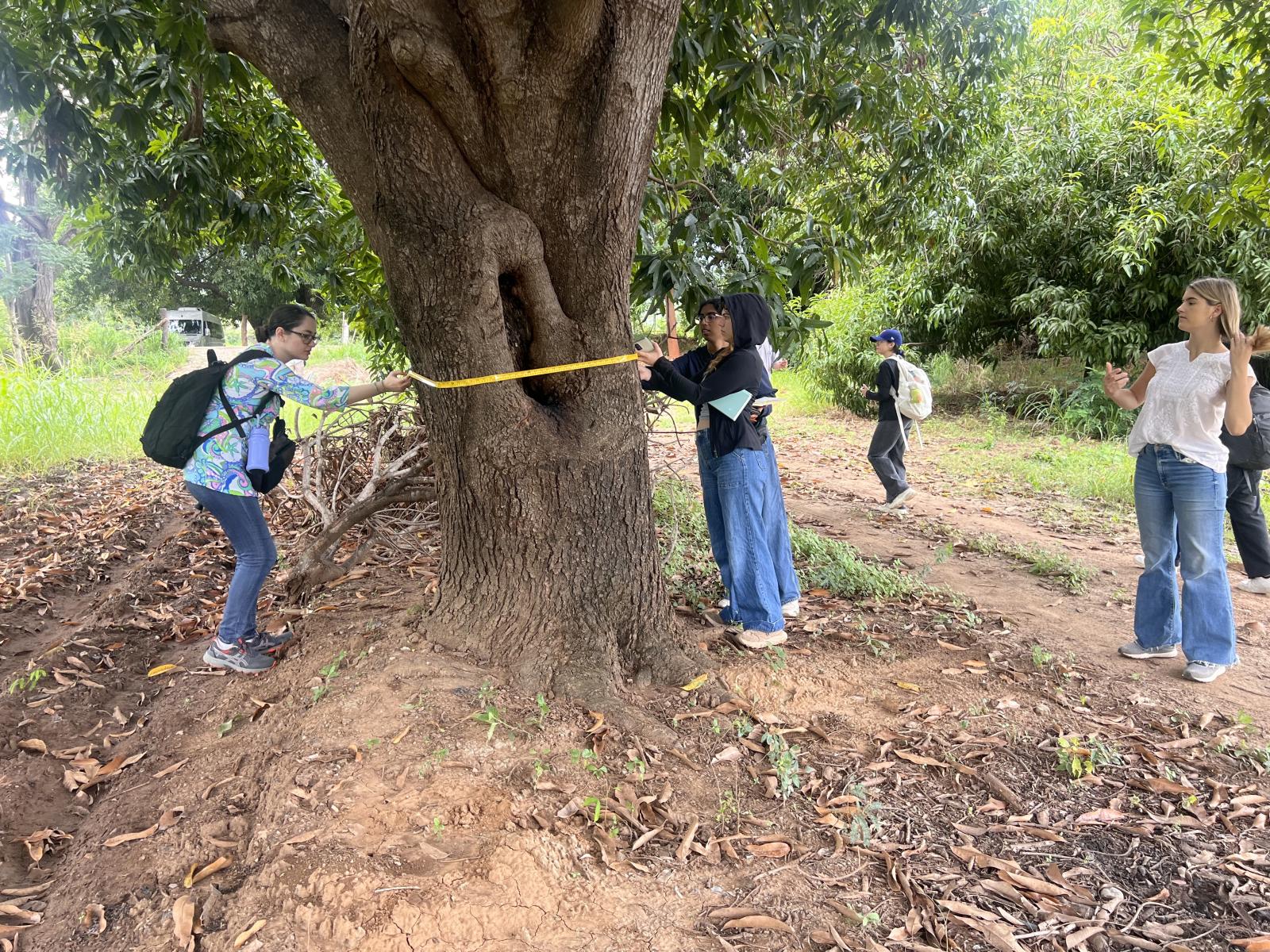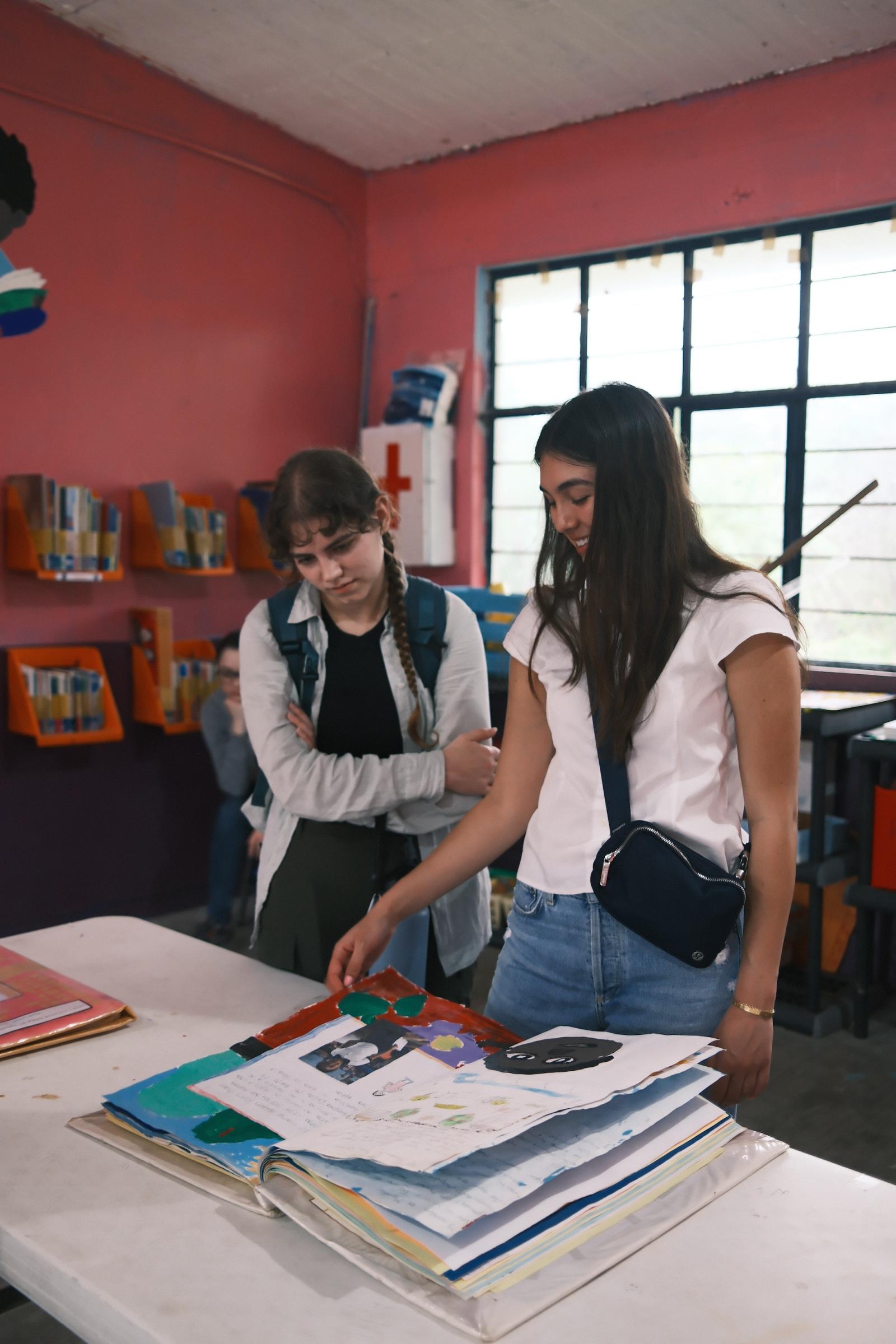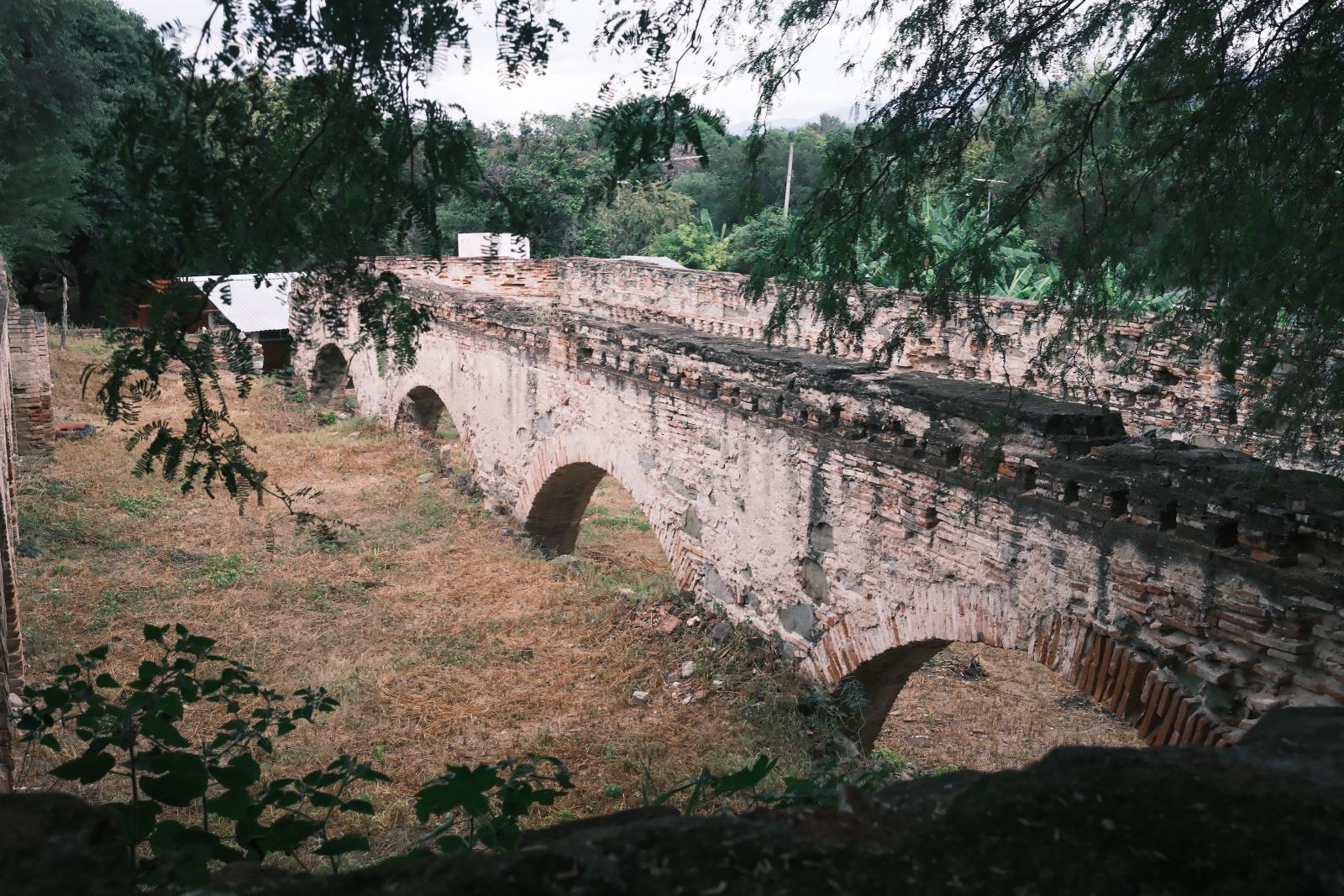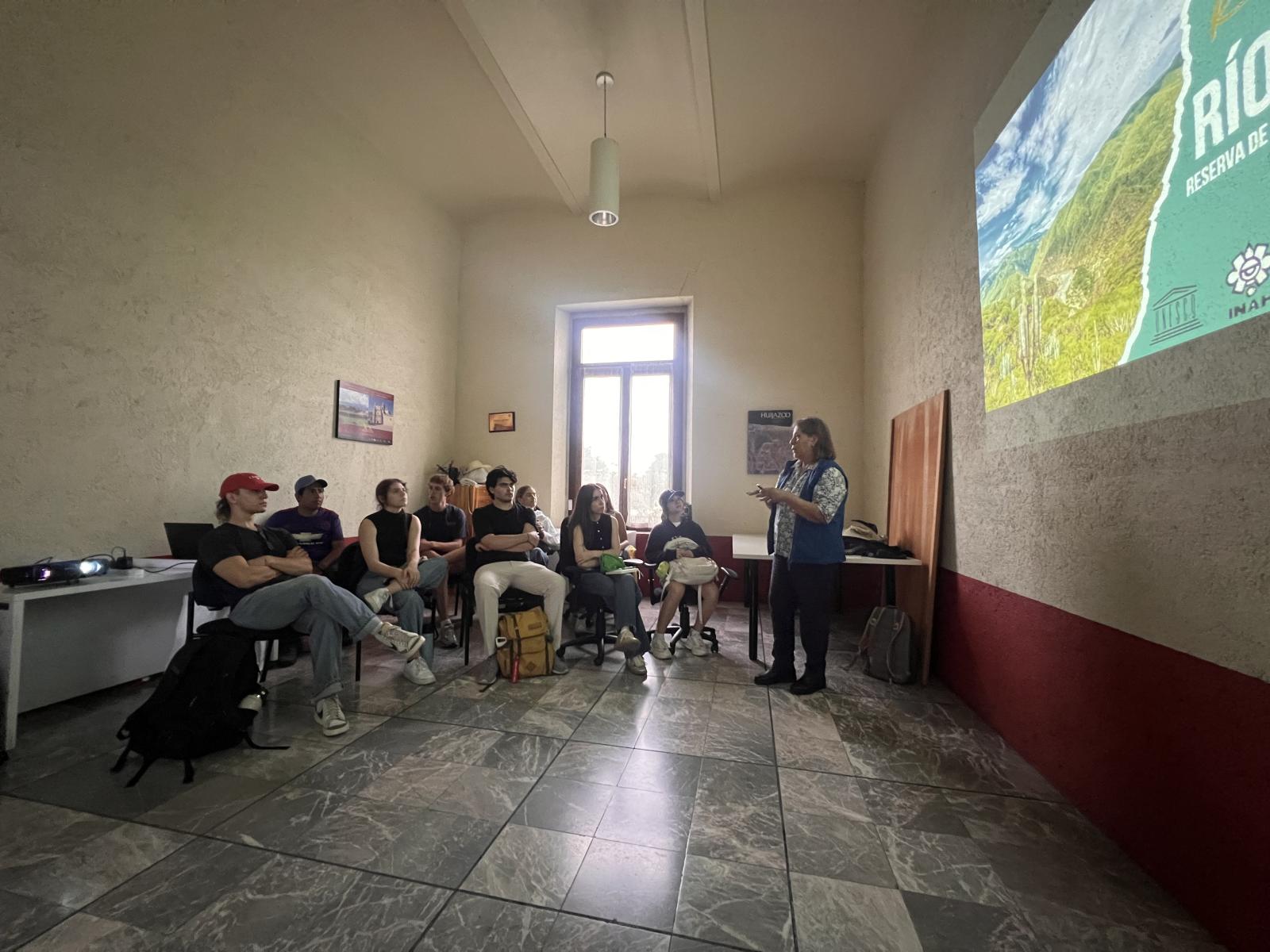LLILAS-Supported Studio Forges New Connections Between UT School of Architecture and Latin America
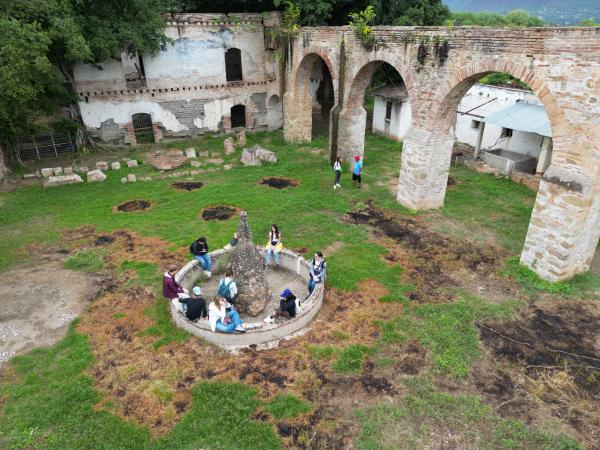
In an immersive, week-long research trip to Oaxaca, Mexico, architecture and landscape architecture students explored the intersections between cultural and natural heritage as they developed designs for a visitor center at the Tehuacán-Cuicatlán World Heritage Site.
This experiential opportunity is part of Associate Professor Benjamin Ibarra-Sevilla’s 2024 Fall Advanced Studio and was made possible through a sponsorship from the Teresa Lozano Long Institute of Latin American Studies (LLILAS).
LLILAS, whose mission is to improve knowledge and understanding of Latin America, has a long-standing collaboration with the UT School of Architecture. Together, they share a dual degree in Latin American Studies and Community and Regional Planning and have jointly developed numerous student and faculty projects. The School of Architecture has more faculty focused on Latin America than any other architecture school in the country, and several of its faculty hold associate roles at LLILAS. Ibarra-Sevilla, the school’s Advanced Studies program director and associate professor of architecture and historic preservation, serves as LLILAS’s associate director of research initiatives.
“This sponsorship by LLILAS represents a significant moment of alignment between the School of Architecture and LLILAS, where Title VI funds are being applied to advance research on Latin America’s complex challenges,” said Ibarra-Sevilla. “It also provides students the opportunity to engage with economically challenged communities that preserve an extraordinary cultural and natural heritage.”
“LLILAS’s support speaks to its commitment to fostering collaboration at the university level, and it underscores the School of Architecture's dedication to integrating Latin America into the scholarship we develop here,” Ibarra-Sevilla continued.
Tying in directly with LLILAS's mission, Ibarra-Sevilla’s studio partnered with Mexico’s National Institute of Anthropology and History (INAH) to facilitate an in-depth exploration and appreciation of Indigenous cultures and environmental stewardship in the Cañada region of Oaxaca, Mexico. From Sept. 22-28, students engaged with the region’s diverse landscapes, local communities, and architectural heritage.
Visiting the iconic archeological sites of Monte Albán and Mitla and the 16th-century monastery of Santo Domingo, students learned about the region’s architectural heritage and the importance of preservation and adaptability in design.
The studio’s central project—a proposed visitor center for the UNESCO World Heritage Site Tehuacán-Cuicatlán—challenged students to design a "Living Pavilion" that honors the region’s rich history, integrates traditional construction methods for sustainable development, and blends seamlessly with its unique landscape.
As part of the immersive studio, students also strengthened their cross-cultural communication and language skills by meeting with Indigenous community members and attending a lecture by the visitor center project organizer. Although the student designs are academic exercises, the studio has the opportunity to serve as a laboratory of ideas that may influence the project’s final framework. At the end of the semester, the four best designs will be presented to the Cañada community for consideration by project leaders.
The visitor center project stemmed from connections with Mexican archaeologist Dr. Nelly Robles, a Fulbright Visiting Scholar at the School of Architecture in spring 2023. Dr. Robles, along with Mexican architect Francisco López, returned to campus this fall to lead workshops on cultural heritage management and sustainable design for Ibarra-Sevilla’s studio.
Looking ahead, the School of Architecture will welcome Professor Daniel Escotto in Spring 2025. A professor of architectural theory and history at the Universidad Nacional Autónoma de México (UNAM), Escotto will teach a studio that explores the architectural and urban conditions in the Yucatán Peninsula. Currently, he is teaching a graduate seminar at LLILAS titled “Social Responsibility of Architecture and Urban Planning in Mexico” through the institute’s Tinker Visiting Professor program.
By fostering connections between students, faculty, and communities across borders, and partnering with LLILAS, the UT School of Architecture continues to lead in integrating Latin America into its scholarship and design practices.

